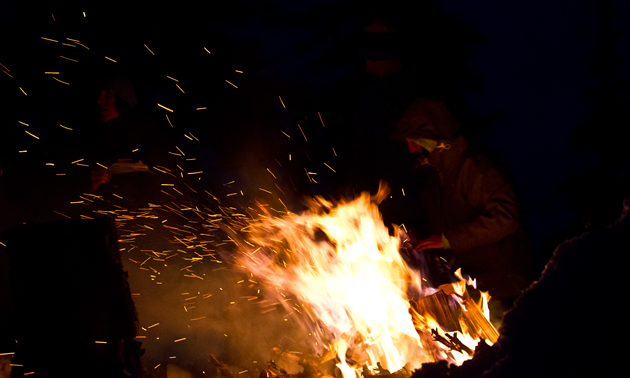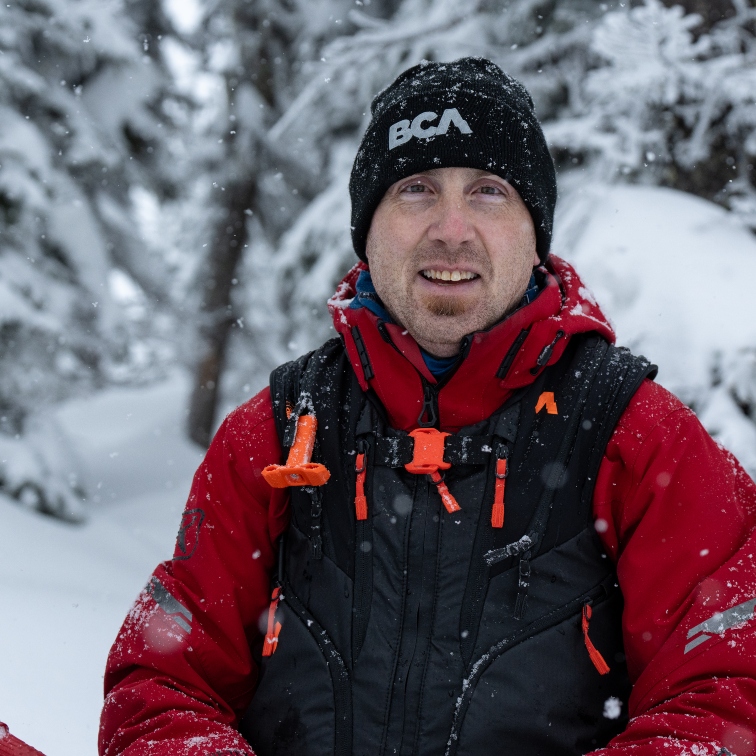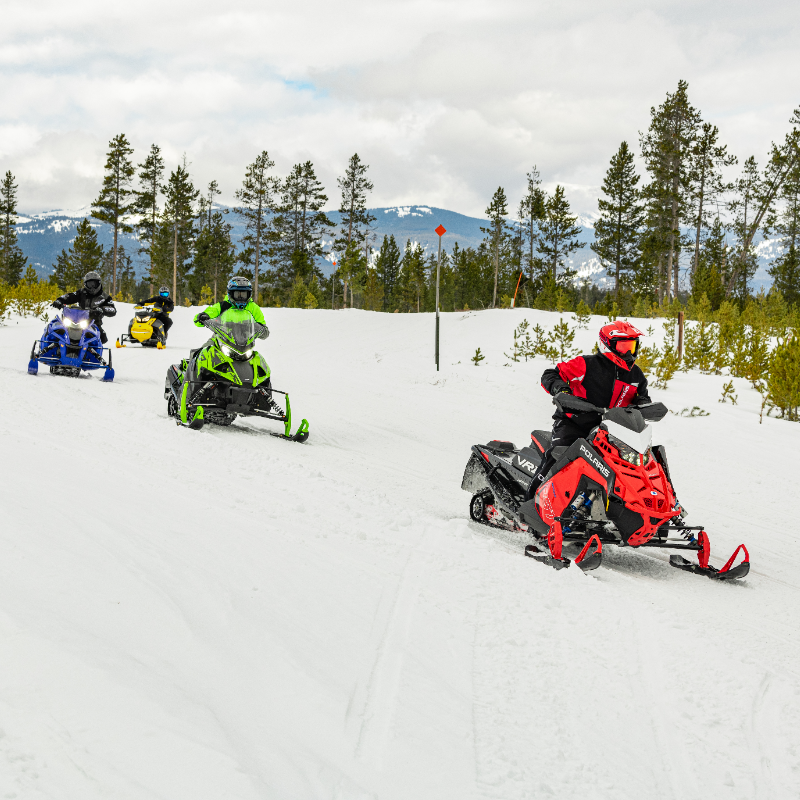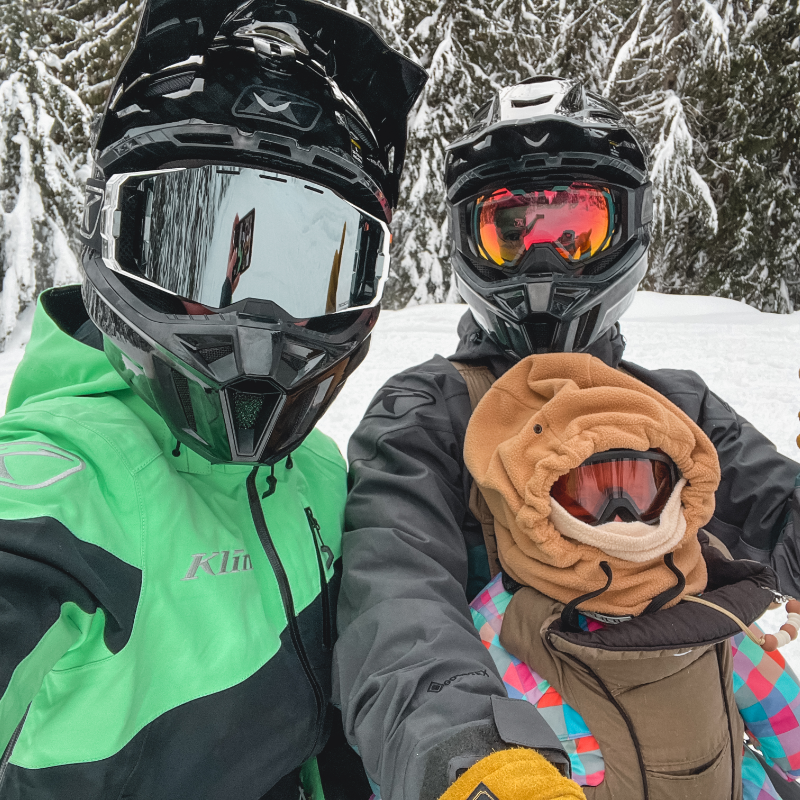The day started out as any other—a nice afternoon ride with all right snow. As the light started to fade, Jim and John (the names have been changed) kept exploring. They were close to home and conditions were improving with each hour as the snow started to fall heavier. As they were searching for a new route down through some trees, they realized that they had dropped into a steep section and the only way out was to go back up.
The weather report had been a little off and the light-to-moderate snowfall that was forecast was actually well beyond that. Flakes the size of silver dollars pounded down, accumulating quickly, and the guys' only options were to try and boot-pack a trail through the deep snow to ride up and out, stay put, or—as luck would have it—they were able to make a phone call.
Now these guys are two extremely competent riders and outdoorsmen, and if they'd had to stay overnight they would have been just fine. Instead, the cellphones they carried saved them from a night in the trees. Jim’s girlfriend was able to find a partner, and at 1 a.m. sledded in to where the boys had hiked out, providing a ride home to a hot shower, food and a warm bed. The next day they went back, and in a matter of an hour had packed a trail with snowshoes and rode their machines out.
It is easy to get lulled into a false sense of security when you are riding in the mountains. You become familiar with an area—and with a crew of riders—and all you think about is the fun to be had.
If something goes wrong in the backcountry, it generally isn’t going to be that bad. Unless it is a life-or-death situation, there isn’t much need to worry about getting out immediately. With a simple survival kit and some common sense, you can easily stay out the night and wait or rest up until you’re ready to walk.
Stay calm
Most times, it is panic that causes people to make their situations much worse. If you are stuck far from the road and know you can’t walk out in a reasonable amount of time or if you have to wait for help, calm down, build a fire and maybe a small lean-to for some protection, and chill out. Someone will miss you soon enough. Just the process of getting some wood or building a shelter will not only keep you warm but also keep your mind distracted. Heck, maybe you can even try to enjoy the experience a little.
In reality, no matter if we are rooping it up in our favourite go-to zone or hitting up a new area, the steps we take before we go are the ones that will keep us safe. First and foremost are the simple things, such as making sure your sled is tuned up, that you have enough fuel for the day and that you have a first aid kit, a tool kit and a spare belt. Also check to make sure that someone has a tow strap and that there is extra grub in your pack.
Of course, all this stuff is adding up and one thing we all surely dread is the heavy-pack syndrome. Sure, it may not feel too bad at the start of the day, but by the end it will be dragging you down—and there is always the possibility of doing long-lasting damage that results in neck, shoulder and back pain for days and days after a ride. Much of the non-essential stuff you carry can be stuffed into one of the many tunnel bag options that are out there. CFR makes a fantastic bag insert for its wicked rack system that stores all the non-essential items nicely.
Your shovel, first aid kit and backcountry survival gear should be carried on you, though. In the event that you are separated from your sled, you will be equipped with the essentials to make it out or at least wait for help to come to you.
So, you may ask, “What’s in a backcountry survival kit?” Well, everyone has a different idea of what they need to carry, but one thing you will notice is that the more experience a rider has, the smaller the kit becomes. There is no need to carry everything but the kitchen sink. Paring it down to the essentials saves weight and means that you are more likely to carry it with you at all times.
Survival kit items
- Knife: With all their options, Swiss Army knives really are awesome.
- Two lighters: Zippos are waterproof and windproof. Make sure it is full and the flint is fresh—extra points if you carry flints with you.
- Lighter fluid: It's great fire starter, as you may just run out of fuel in the sled.
- Newspaper with a few pages folded up as fire-starting material
- Rope: From tying up a splint to lashing down branches for shelter, it has all kinds of uses and doesn’t take up much space.
- Folding saw: Cutting firewood or limbing out a shelter is much easier and faster with a saw.
- Duct tape: What can’t you do with this stuff? Don't bother with the whole roll, just find a small-diameter tube and wrap some around that.
- Cellphone: In this day and age, many of our riding zones are within technological reach of society, meaning we can call out if our phones are with us.
- An inReach or Spot system: The inReach system is the more practical, but the Spot is great for emergency situations. Both work well and are safety essentials when you are travelling out of cell range.
- Common sense.
Staying warm
Really, in most situations there only two skills you need to have to save yourself and those with you from spending long, cold hours out there.
Start a fire: Look for standing dead trees if you can, as they won’t be as wet as stuff that has been under the snow for a while. Start with your paper, then add tiny sticks (your tinder). The more dry the tinder is, the easier and faster the fire will start and take hold. As the flames start to burn, add your wood—moving from small pieces to large ones.
If the wood is slightly damp you can shave it using your knife. Leave the shavings slightly attached to the branches and this will help them catch fire and burn, as they act like tinder on each individual stick.
Don’t be afraid to tip your sled over and pour some gas out if need be. Of course, use a can or cup to catch the fuel and do not under any circumstances pour from your sled’s tank directly onto a burning fire or anything you suspect might have a spark going.
Shelter: Whether it’s a snow cave or lean-to, you will probably want shelter if you’re stuck for the night. Both take a bit of work to construct, but will be well worth it as the night wears on.
For a snow cave, find a drift or mound of snow you can dig into. Dig a hole into it, pack snow around the opening (jamming your pack against the hole is a great way to plug it), leaving a vent hole for fresh air to circulate as you don’t want to suffocate yourself. If you can’t have a fire, a snow cave is the way to go as it will warm up with your body heat. Laying pine/fir/spruce boughs on the floor—so that you are not directly on the snow—will also help your warmth and comfort level a lot.
A lean-to is pretty simple. With your saw, cut down a cross member that you will string up between two trees; preferably, like the snow cave, smaller is better. Lean branches from the cross member to the ground, placing tree boughs over the whole thing—and voila, you have a quick makeshift shelter. Toss some boughs on the ground, keep the fire close, and you will be good to go.
All of this information can be found online and in more detail. Research it, learn it and practise it a time or two so that it is a seamless process. Hopefully you will never have to use it, but if you do, it will be automatic and not a panic. Most of all, don’t forget your common sense—this is the most vital tool we can all use.







